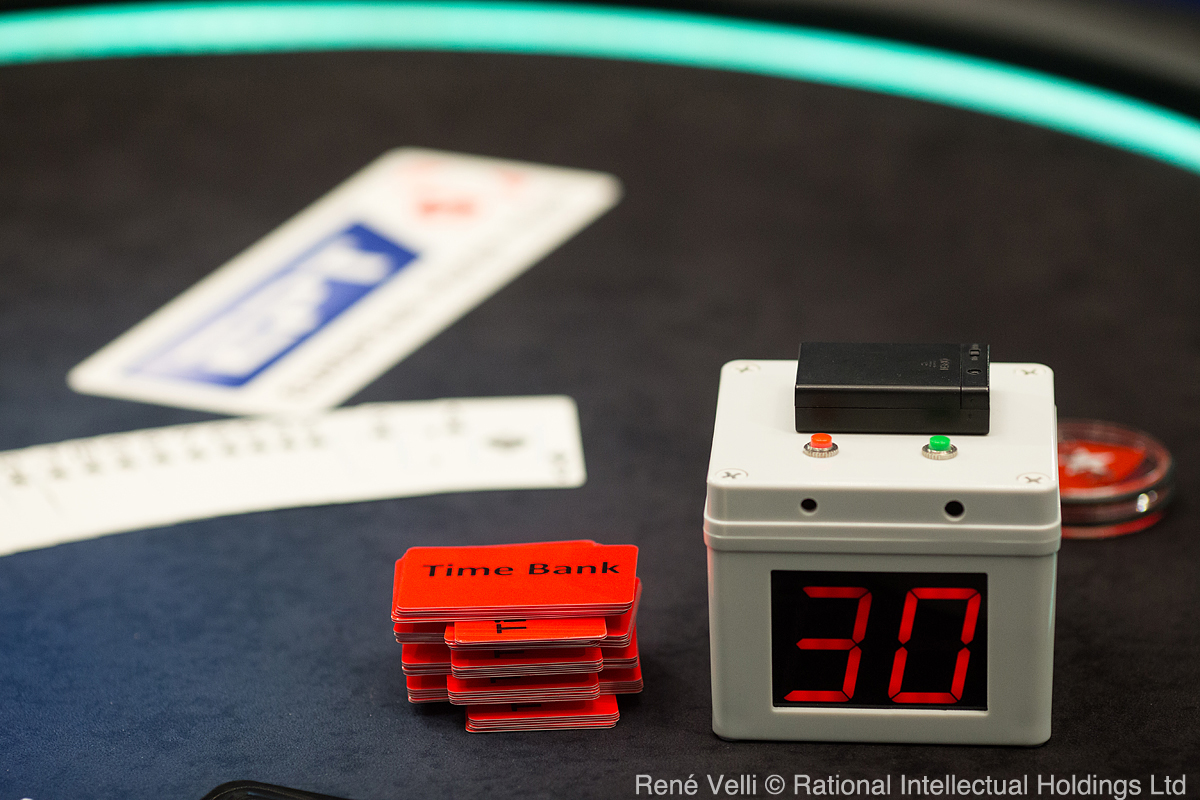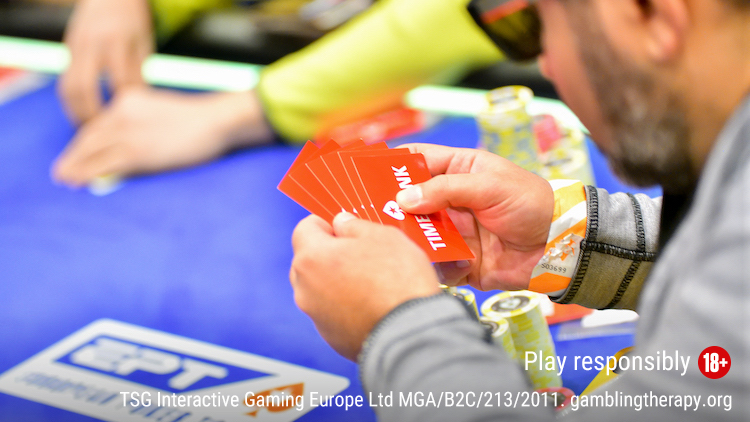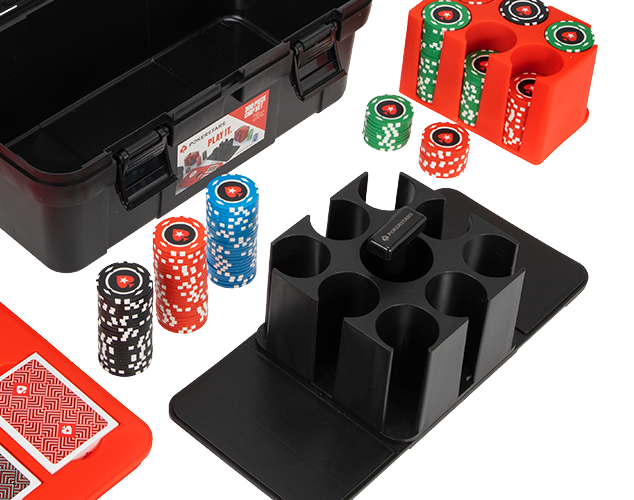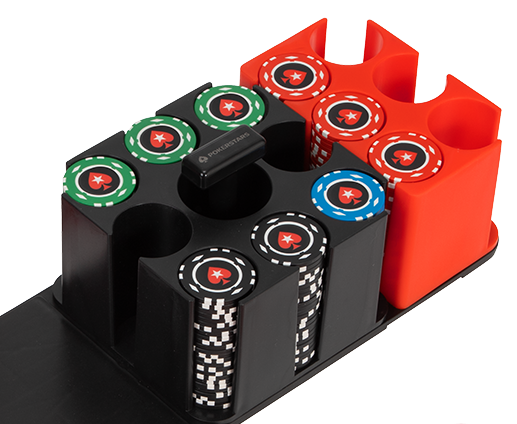Tournament staff on the European Poker Tour (EPT) continually make slight changes to rules and regulations to improve the player experience. It’s never too radical (a flush still beats a straight), but wherever they spot a chance for improvement, they’ll take it.
In Prague, Tournament Director Toby Stone and his team have introduced a new way to manage the allocation of time-bank cards in high roller tournaments — i.e., events with a buy-in of €10,000 or more.
These tournaments necessarily have smaller, exclusive fields, but new approaches are very often trialled at this level before being introduced in smaller buy-in events, so it’s often relevant to players at all levels.
Stone took a moment to describe, firstly, what the problem had been and, secondly, what they’ve decided to do about it.
INCONSISTENT ALLOCATION
“All €10K+ events are shot-clock tournaments, but the problem was that we have different kinds of high roller events,” Stone said. “We have single-day events, two-day events, three-day events; 30-minute clocks, one-hour clocks, etc. And the way we gave time banks was very confusing.
“You’d get some at registration, then you’d get some on Day 2, then on the final table. But sometimes Day 2 would be a final table, or you’d reach 11 and then get to a final table just after the start of Day 2.
“It was just a mess. No one knew how many time-bank cards you’d get.”
To refresh your memory, shot-clocks govern the amount of time a player has to make their decisions. Just after action passes to them, a dealer hits a button on the shot clock, which starts what’s usually a 30-second countdown until the player must act.


Keeping time on the EPT
The exception is if they want to play a time-bank card. Depending on the tournament, each player got a different allocation of time-bank cards, which would buy them 30 more seconds of thinking time. Clearly some decisions are harder than others in poker, and you could play these time-bank cards in those tricky spots.
However, as Stone says, the way these cards were allocated was inconsistent, and changed from tournament to tournament.
“It used to drive me crazy,” Stone admitted. “I’d always get asked how many time-banks players were getting, and I never knew. I’d have to go look at the file, and it didn’t cover all of the situations. There were a few little holes in there that we had to look at.
“I wanted it off my desk, basically. So I came up with the solution, just. We’re going to give them one per hour.”
A ONE-SIZE FITS ALL SOLUTION
Rather than have one rule for a €50K tournament, where levels last an hour, and one for a hyper turbo, where they might last 15 minutes, the new allocation system is one size fits all.
Stone said: “At the start, when you sit down, whether you’re a new entry or a re-entry, you get four time-bank cards. And then you get one every hour.
“If it’s a 30-minute clock, you get a card on every even level. In the Super High Roller, where we have one-hour levels, every level, you get a card. If we ever do 15-minute clocks — we don’t here, but we will at the PCA — it’s one every four levels.


EPT Tournament Director Toby Stone
“The only stipulation is that you have to be sitting in your seat to get the card. On the first hand. You come the second hand, no card. And that’s it.”
Stone added that the net results is that players end up with roughly the the same number of time-banks cards as they always did, it’s just that the rules have been simplified.
“It’s one every hour until the tournament ends, no changes for Day 2, final table, anything,” Stone said. “That’s it. One every hour, that’s it.”
ONE MORE THING…
The new allocation of time-bank cards was trialled for the first time in the €25K buy-in event that took place on Tuesday. Naturally, there are always questions, and players wanted to know what would happen, if they were eliminated, to time-bank cards they had accumulated before that point.
Stone could answer. “If you’re eliminated with more than four time-bank cards, and you re-enter, you can claim what you had. So if I get eliminated on Level 6 and have six time-bank cards, I get them back if I re-enter in Level 7, or whenever.
“The minimum is four for everybody. So if I buy-in in Level 1 and I use all my time bank cards, and I get eliminated and I buy-in on level 2, I get four. Four’s the minimum. It’s super simple now.”
A POSITIVE RESPONSE
As with anything new, even such a relatively minor rule change, it will take a few tournaments to know whether it words. “We get a little bit of feedback here and there, but it went pretty well,” Stone said. “One person said it’s almost too many cards. It should be one every two hours. And we might change that, down the line. For now I want to do this for at least two or three events, see how it goes, and then we might review it. We don’t want to do something and then change it straight away.”
As ever, the EPT tournament officials are in regular conversation with players about improvements, and nothing is beyond debate. Watch the space for any more changes, as and when they appear.
Back to Top











